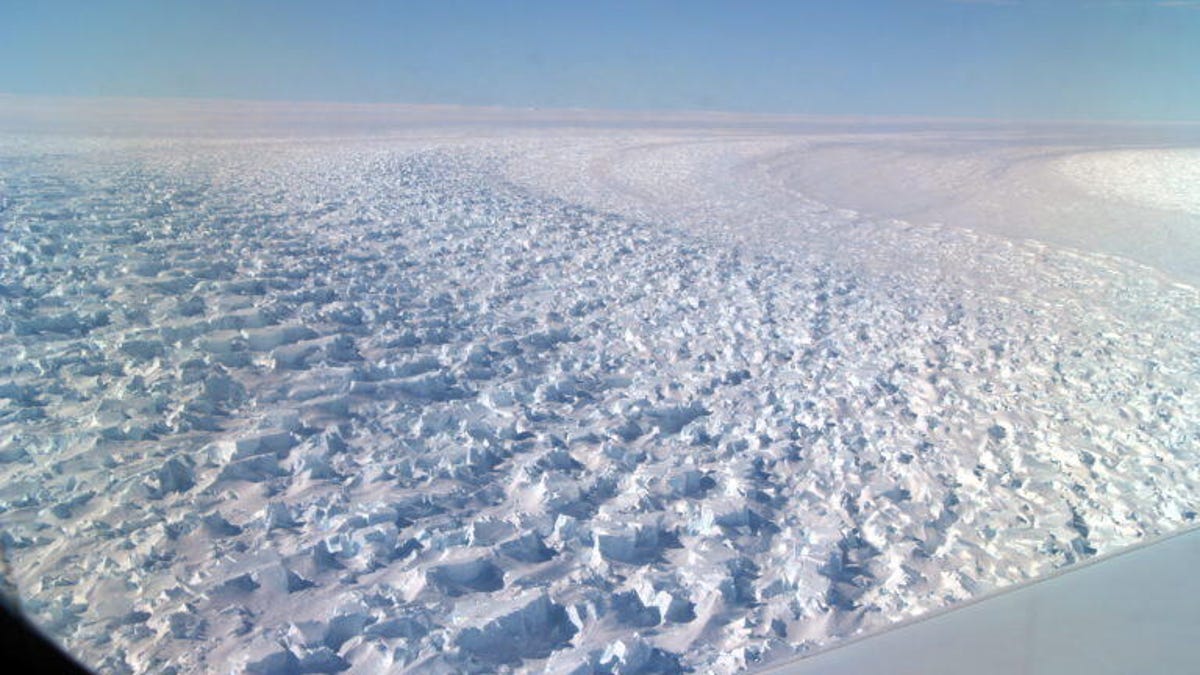Antarctic glacier retreats nearly 3 miles, could foreshadow huge sea level rise
Sea levels worldwide could go up nearly five feet, researchers say.

The topography under Denman Glacier in East Antarctica could lead to greater climate-driven destruction.
Researchers have found that the Denman Glacier in East Antarctica has retreated nearly three miles in the last 22 years, signaling a potential rise in sea levels if climate change trends continue. Sea levels worldwide would rise almost five feet if the Denman was fully thawed, researchers at the University of California, Irvine, and NASA's Jet Propulsion Laboratory said in a Monday release. The scientists' assessment of the glacier and surrounding area was published in a paper in the American Geophysical Union journal Geophysical Research Letters.
From 1979 to 2017, Denman Glacier had a cumulative mass loss of 268 billion tons of ice, according to the study.
"East Antarctica has long been thought to be less threatened, but as glaciers such as Denman have come under closer scrutiny by the cryosphere science community, we are now beginning to see evidence of potential marine ice sheet instability in this region," Eric Rignot, co-author and professor of Earth system science at UCI, said in a statement. "The ice in West Antarctica has been melting faster in recent years, but the sheer size of Denman Glacier means that its potential impact on long-term sea level rise is just as significant."
Researchers closely examined Denman's grounding line -- the point at which ice leaves land and starts to float in the ocean -- using radar interferometer data from the Italian Space Agency's COSMO-SkyMed satellite system. Data from 1996 to 2018 showed a "marked asymmetry in the grounding line retreat at the ice sheet's land-sea interface," lead author Virginia Brancato said.
The eastern side of Denman Glacier is protected from retreat by a subglacial ridge, but the western side has a steep trough and bed slope that could contribute to accelerated retreat, she said.
"Because of the shape of the ground beneath Denman's western side, there is potential for rapid and irreversible retreat, and that means substantial increases in global sea levels in the future," Brancato noted.
A December study found that the trough under Denman Glacier goes 3,500 meters below sea level, making it the planet's deepest land canyon.
It'll be important to track the 24,000-square-kilometer floating extension of Denman Glacier, which includes the Shackleton Ice Shelf and Denman ice tongue, Rignot said. Researchers examined the melt rate of the floating ice and found that the Denman ice tongue has lost mass at a rate of around 3 meters per year. That's above average when compared to other ice shelves in East Antarctica, the study says.
"We need to collect oceanographic data near Denman and keep an eye on its grounding line," Rignot said.

